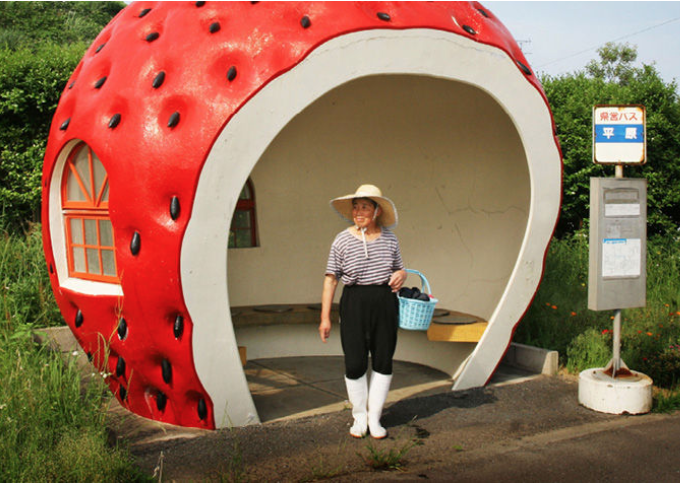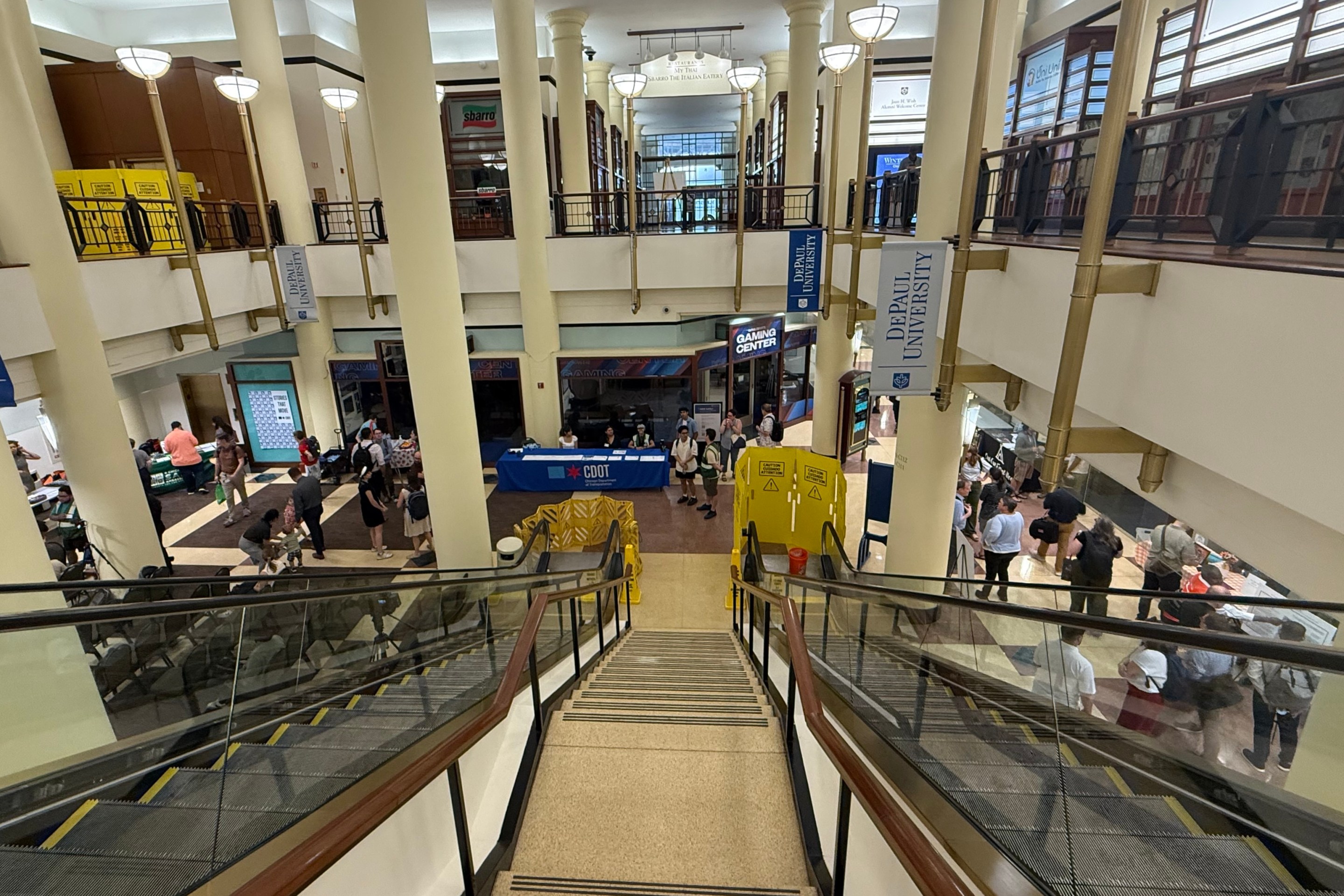A few years ago I came across a City Lab story on the hoards of people camped out to use the swings at Boston's Lawn on D Street, a temporary park geared towards adults, which was created in late summer 2014 and eventually became a permanent fixture. That made me want to have some sort of adult playground here in Chicago, complete with swings, see-saws, merry-go-rounds, and other playground equipment I enjoyed as a child.
I then started thinking about how cool it would be to have swings at bus stops. If I'm going to be breathing car exhaust as I wait for the bus, I might as well have fun. One of the most memorable aspects of my trip to Bahia, Brazil last winter was seeing playground equipment at an intersection where lots of buses stopped. I thought it was so cool that children (adults too, perhaps) had an opportunity to play while waiting for the bus. I wish I had taken a photo. There’s nothing joyous or enticing about Chicago’s bus stops, even the fancy Loop Link ones downtown.
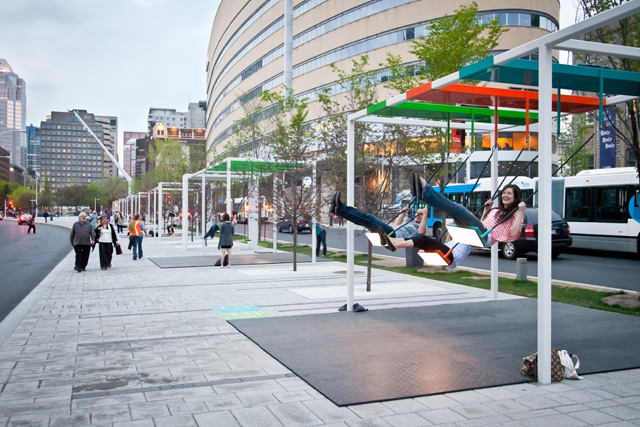
Last weekend I came across the book "Make Transit Fun! How to Entice Motorists From Their Cars" by Darrin Nordahl and fell in love with it by the first page. The book, which covers walking and cycling as well, opens with the quote from former Bogotá, Colombia, mayor Enrique Peñalosa, “Transportation is not an end -- it is a means to having a better life, a more enjoyable life.” Peñalosa launched many projects in Bogotá that improved mobility and quality of life for its citizens, including the extensive TransMilenio bus rapid transit system and the Sunday Ciclovía or "cycleway" program, which opens a roughly 75-mile network of streets for car-free recreation.
The quote about transportation being a means to better life really resonated with me. Part of why I get pleasure from biking and would love for more folks to use it for transportation is the potential for more joy in our city. I also believe transit and walking can be a source of joy. How many of us have crossed paths with a friend while boarding or exiting the train or bus or walking somewhere? How many of you conversed with someone you wouldn’t normally talk to simply because you were on the same bus, train, bike route? These are some of the perks of using sustainable transportation instead of being isolated inside a private car.
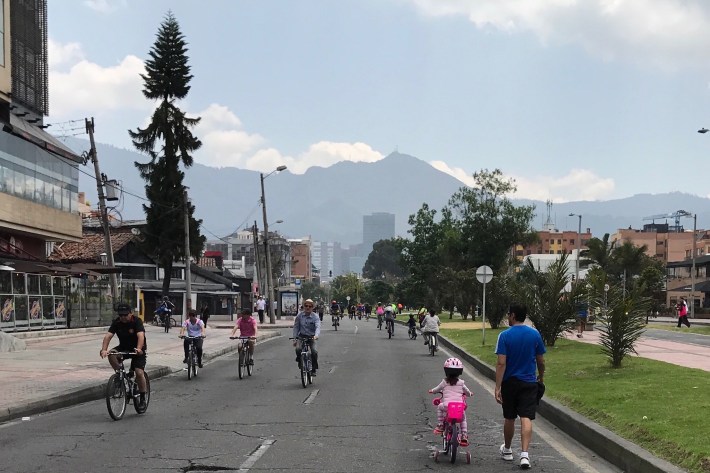
I’ve written about bike joy and ways we can speed up Chicago’s buses. After reading "Making Transit Fun!" I wanted to explore ways to infuse Chicago's transit system with joy. Nordahl cites examples of cities that have succeeded in implementing projects to jazz up transit, creating biking infrastructure that is safe and enjoyable for people of all ages, and improving the pedestrian experience. There are also a few examples of projects that were stymied, and public transportation industry regulations or practices that inhibit innovation.
Nordahl suggests that transit agencies focus on improving the image of the bus through rebranding, playing music onboard, using better vehicles, and designing engaging bus stops. The CTA has an opportunity to improve the image of its buses through rebranding. The CTA could use humorous or thought-provoking ads to entice folks to consider riding the bus more often, like this amusing ad for Go Transit, which serves metro Toronto: "It’s like the self-driving car has arrived already and we saved you a seat.”
New CTA bus designs, relaxing music on some routes (perhaps the style of music could be determined through focus groups), and memorable bus stops, among other options. The CTA could engage current and potential bus riders in terms of what kinds of bus stop features would appeal to them, and what style of bus would be more enjoyable or enticing to ride.
While not a bus stop-to-bus stop comparison, the entrance to the CTA's Chicago Avenue Red Line station and this fruit-shape bus, one of many such stops along the 207 National Highway in Konagai, Japan, offer very different user experiences. The first literally uplifts an SUV, a competing form of transportation that is harmful for public safety and the environment, as a strategy to generate ad revenue. The second makes sustainable transportation more attractive, comfortable, and enjoyable.

The "Making Transit Fun!" chapter on improving the bike experience didn't tell me anything I didn't already know, but in fairness the book was published in 2012, not long after Chicago began installing protected bike lanes, and shortly before the Divvy system launched. Nordahl recommends that cities build a network of protected bike lanes, provide an abundance of hassle-free bike parking, have fun with bike rack design, create bike-share systems, and market toward "interested-but-concerned" cyclists.
Chicago is doing most of these things, but not at the level we could be. Installing secure, sheltered on-street bike parking facilities like the "Bike Hangars" installed in Bristol, England, would be be a great way to incentivize cycling for apartment dwellers who lack convenient indoor parking.
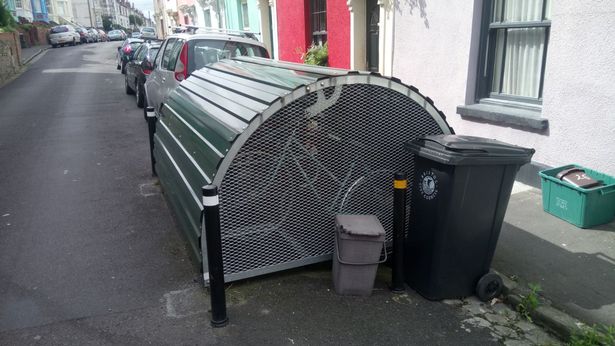
As I previously wrote, we need a citywide network of protected bike lanes to really grow the numbers of people who cycle for transportation and recreation in the city. As examples of safe and inviting bikeways, Nordahl mentions how Vancouver has protected some of its bike lanes with low concrete Jersey barriers, and Indianapolis created the Cultural Trail network of downtown raised bike lanes.
Many Chicago cyclists have commented on the ugly aesthetics of some of Chicago’s protected bike lanes, lined with flexible plastic posts that have been battered by drivers. But it's possible to create safe and aesthetically pleasing protected lanes. I’m a fan of colorful planter-protected bike lanes, like these ones in Toronto.
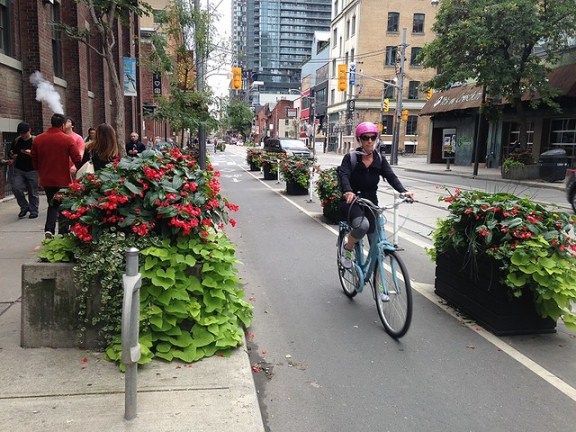
I am looking forward to the release of the CTA's recently announced study of strategies to improve its bus system in the wake of falling ridership. CTA President Dorval Carter said the transit agency plans to take a “holistic look” at the entire network, calling the study a “unique opportunity for us to take a look at how our service is operating, how it’s meeting the needs of our customers, and having conversations with them about how that service should look.”
There could be the potential to radically transform bus service in Chicago. This could be an opportunity to advocate for bus service that can entice residents out of their cars. Reducing driving will require "sticks" in the form of policies that make unnecessary trips less attractive, such as congestion pricing fees to drive into the transit-rich Loop, as well as "carrots" to incentivize public transportation use. Creating transit that is a joy to use is one such carrot.
Nordahl writes, “Distinctive transport systems move people, both physically and spiritually. They stir the soul, which is why they are successful at attracting people, jobs, and development… It is not a matter of spending to make transit fun; it is about spending smarter." My hope is that, along with improving bus speed, reliability, and frequency, the CTA will focus on jazzing up the rider experience to help make riding transit an activity that more Chicagoans actually like to do.
